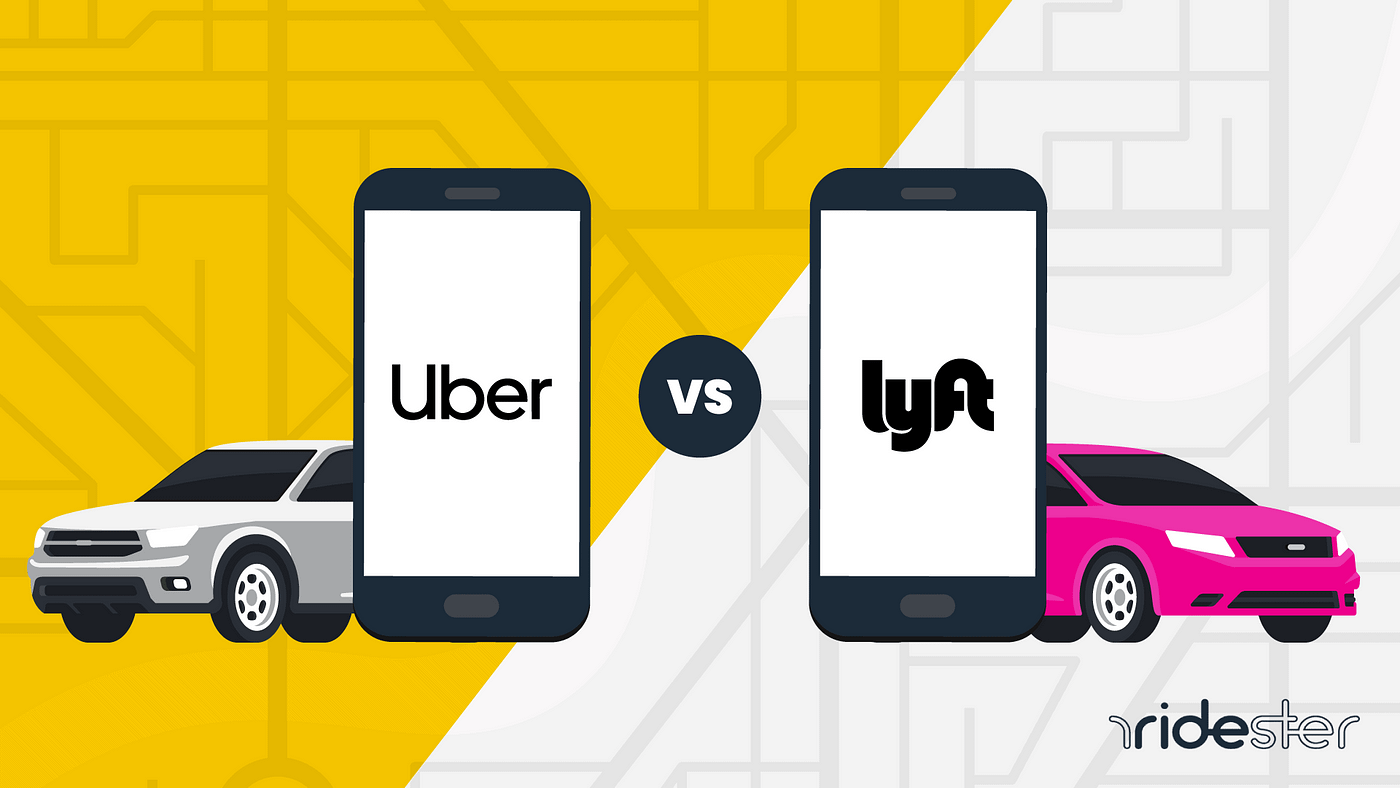Lyft vs Uber: The ‘Tech-enabled Mobility’ industry is gaining momentum with each passing day since 2012-13. Everyone wants to live a life of comfort and save time. But very few are able to make their own life comfortable for themselves. For the majority of the chunk who are not able to make their own life comfortable, companies like Lyft and Uber are built to enable ease of commutation and reduce the stress of travel.
In the age of modern technology, it is difficult to find a proper app for taxis or a mode of transport amidst a big crowd and high demand chaos. This problem was recognized by the founders of Lyft and Uber and in no time, the companies were launched which aimed towards building a model that caters to the needs of the public by offering them a service that would reduce their daily stress and boost daily efficiency.
Any service or offering that solves the consumer problem by providing them convenience, wins in the industry. With increasing population, the demand for transport services is ever rising. Keeping that in mind, the founders of the companies developed a sustainable model that shall cater to all the classes of the population and meet the demand of size of the population.
Lyft Vs Uber:

Lyft and Uber are the two largest transportation network services in the USA. These ride-hailing services have provided employment in large numbers to the people living in America. It is kind of a self-employed work in which the revenue is shared with the company.
The services include peer to peer servicing. The main motto behind doing this is to make a customer profitability model that facilitates economic mobility for the workforce, thus fulfilling the demands of the general public. The interesting part is that both the companies had filed their IPOs on the same day.
The Points of Difference Between Lyft and Uber are as Follows:
1. Global Presence:
Services of Lyft are restricted to the United States of America and Canada whereas Uber is present worldwide. Softbank capital and fierce expansion strategies were the main catalysts to this resultant differentiation.
This makes Uber a perfect demographic fit amongst all other transportation service companies. For example, in India, the company Uber is recognized more than Lyft. The global presence matters in many ways in terms of brand awareness, brand recognition, brand equity, brand recall, and much more.
Word of mouth publicity is much more in the case of Uber. The reason being, people are aware of its services since they have used it personally in their own country and elsewhere. The global presence also affects the revenue, profits, and survival of the company in the case of tech consumer products and services.
2. Profitability:

As mentioned earlier, global presence is a crucial factor in shaping cash flows and new initiatives. Since Uber has a bigger presence, it has more revenue in comparison. Lyft had its revenue increase at a faster pace in 2018. Yet Uber remains the leading player because its strategies are shot like a wildfire that spreads all around.
Right from the beginning, Uber worked fiercely. One such fierce action that the company took was, removing the founder itself from the company. Lyft, on the other hand, has a targeted set of countries in Northern America and hence its strategies revolve only around them.
Read More: How Much Money Can You Make Driving For Uber Or Lyft?
3. Features of the App:
Uber shows you the saved places through which you can choose your location easily. There is an option of saving the places that you visit frequently. Whereas, on Lyft’s app there is no available option that lets you save your desired locations.

You have to search all over again. Thus, on the user-friendly front, the app of Uber is better than that of Lyft as per public surveys. Another point of differentiation is, Uber does not show any greeting whereas Lyft shows a greeting while booking.
The terminologies in the app of Uber and Lyft are different. For example, Pool in Uber is called Share in Lyft, and UberX in Uber is called Lyft itself in Lyft. Terminologies play a great role in deciding the company’s market share. A name is a powerful tool that should be consumer-centric to gain attention.
4. Pricing For the Users:
Uber is comparatively high priced than Lyft at certain time intervals as per customer feedback on surge pricing transparency levels. This is one of the reasons why the demand for Uber is more than Lyft even in North American countries.
Price as a factor plays a key role in deciding the traction on the app. Before booking any ride, a user checks the price on other apps as well in order to get a ride at a reasonable price rate. But timely cab availability also plays a key role. This is the reason why Uber is chosen by most people over the other transport services.
There is another case in this pricing scenario wherein Uber also hikes prices when the demand is large and it is a peak period. In such cases, users tend to choose the ride from which they have been traveling the most. It also depends upon the kind of customer on the app. If the customer is a variety seeker, he or she will choose an unconventional mode of transport.
5. Range of Offerings:
Uber has a better range of services than Lyft. It has different types of cars which is suitable for different kind and size of audiences. Uber has UberXL which fits people in a group of 8 or 6. This makes it feasible for people to run errands with their friends or family while being together on the journey.
Lyft Plus also offers the same kind of service but the availability is often low. One difference between Uber and Lyft in their range of cars and services is that Uber offers wheelchair-accessible rides whereas Lyft doesn’t have this option. While both Uber and Lyft are convenient in showing the location and it is permissible to change the locations midway, only Uber allows splitting the ride fare with others in the app.
Lyft had this option earlier but has removed it for some months. Uber allows sharing the location and the contact details with the authorities by dialing 911 whereas Lyft just allows sharing the information with friends or family. Both Uber and Lyft app allows the user to pay through various payment gateway channels. Uber offers an exclusive service through Uber cash.
It allows you to pre-pay for the ride by offering a 5% discount on the ride. Lyft, at times, avoids deep discounting. Uber app lets a user book electric bikes as well. It differs from place to place and demand. Though Lyft has in its offerings some high-end vehicle options.
6. Food Delivery Option:
Uber delivers food through UberEats, whereas Lyft does not constitute any option like this. This adds to another range of services that Uber has which makes it more acceptable and accountable.
Uber is was introduced in 2009 as UberCab whereas Lyft was introduced in 2012 as Zimride. Both have a significant journey. Lyft, being three years younger than Uber, has substantially got in neck breaking competition with Uber.
Both companies have contributed significantly to the transportation services industry and are competing against each other to deliver the best of services to their users. Overall, the transport landscape is seen to be evolving as the consumer behavior pattern changes and the demand of the population camouflages which changes in the market radically fueled by innovation.
Read More:
How To Build Credit With Credit Cards
Best Credit Cards For International Travel
Should You Buy An International SIM Card For Your Next Trip?




Like!! Thank you for publishing this awesome article on this topic. This blog includes the best info about Lyft vs Uber. I appreciate your efforts on this article. Keep sharing your knowledge!